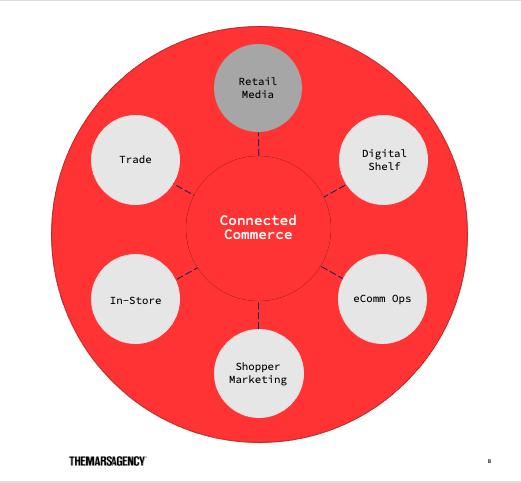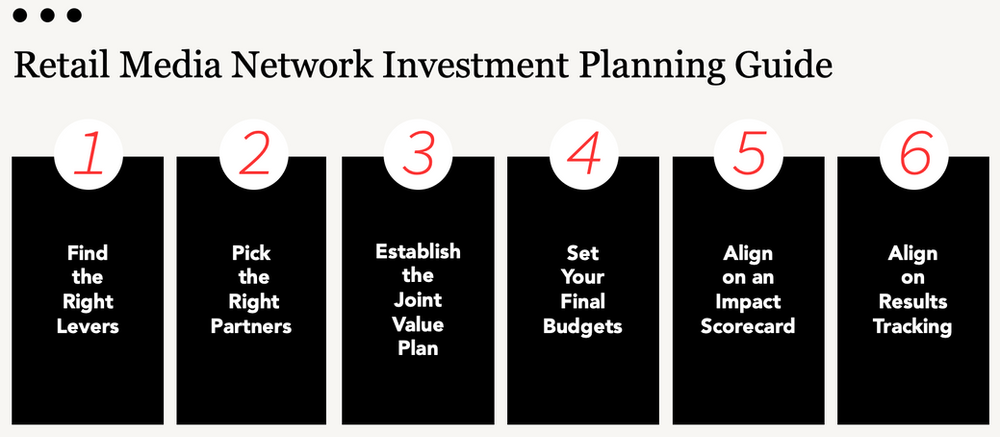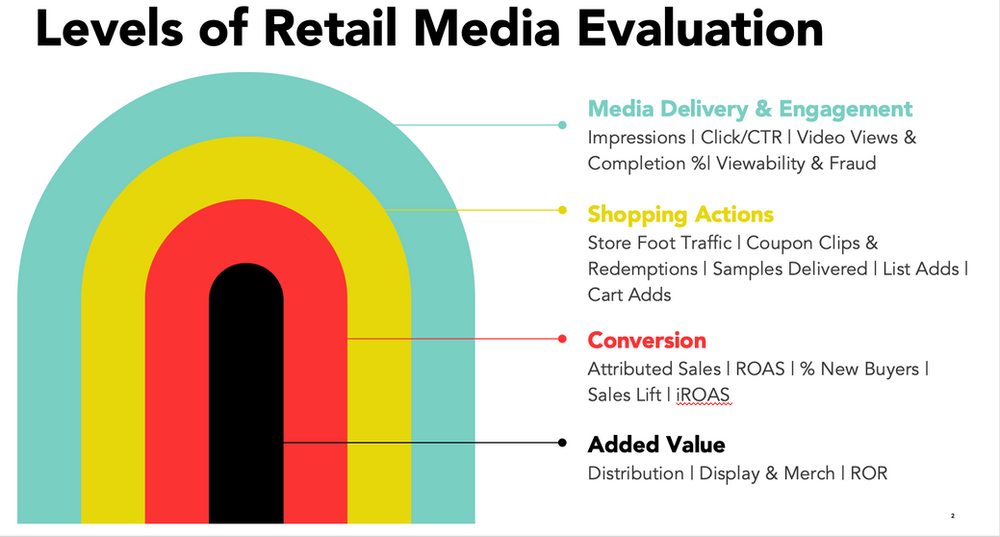By Kandi Arrington, The Mars Agency
The following article is the second in the “Unlocking the Full Potential of Retail Media” series.
Download the full report here: Unlocking the Full Potential of Retail Media
The first critical step in developing an effective retail media plan is to have conversations with all the necessary cross-functional stakeholders to gain alignment on what you’re trying to accomplish.

What business-level objective do you need to focus on? Is it share of category? Household penetration? Once you’ve aligned on the objective, you can identify the most effective and efficient way to achieve that goal.
And once you gain this clarity internally, you can shift the conversation with your retail media partners from a spend-focused negotiation to true joint value planning.
Note that we don’t call it “joint business planning,” because that exercise typically implies a formal contract and meetings with your merchant. Here, the goal is to jointly plan your business together with the retail media partner by explaining: Here’s what I’m trying to accomplish. How can we solve this together?
This focus can really change the tone of the relationship. And it carries through to the measurement stage where, instead of looking at the retail media recap separately, you’re evaluating the impact the media spend had on your business objective to see if it really helped achieve what you set out to do.
Here are the steps your team can use to plan your retail media spend more efficiently and effectively.

1. Find the Right Levers
Determine what key engagement channels and levers will best help you achieve your aligned business goal. You can do this by looking at the historical data you have about your target shopper’s behavior — through the lens of your objective.
2. Pick the Right Partners
Take a look at the capabilities of your retail media network partners. Do they have those levers needed to achieve your goals? Not all networks will have the right tools, so you’ll need to scorecard them to identify which ones do. (Our Retail Media Report Card can help.) This is not a personal exercise, it’s strictly business (as the saying goes), and you need to objectively determine which ones are the right fit for your needs.
Based on your analysis, you can segment retail media networks into three general spending buckets:
- Invest more dollars because they are really helping you achieve business goals.
- Maintain your current investment level because the relationship is strategically important in other ways (like driving sales volume, for instance).
- Reduce the investment because they aren’t able to deliver on your goals (at least until they upscale their offerings) and don’t have much other strategic value.
3. Build a Joint Value Plan
Now it’s time to put your cards on the table by having an open conversation with your retail media network partners to explain what you’re trying to achieve, the capabilities they have that you want to explore, and how you want to do things a little differently than you have in the past. Find out what’s on their roadmap and how you can align your goals with theirs. Learn how can they help you measure the impact of your efforts.

This is also the time to meet with your merchant partners at the retailer to tell them what you’re trying to achieve and how it fits into their category strategies. Make sure that you’re aligned on business objectives here, too, and then bring this conversation back to your retail media network partners to make sure everyone’s on the same page.
4. Set Your Final Budgets
Once you’ve had those conversations, you can really roll up your needs at each network and make a final decision on how to allocate the budget. Where will you invest to accomplish your goal, and where might you need to hold back a bit to accommodate spending elsewhere? This is where you’ll meet with your partners to finalize contracts. The conversations might be hard, but they’ll be well-informed and honest.
5. Align on an Impact Scorecard
A key step throughout the alignment process is developing what we call the Business Impact Scorecard. Identify all the business, media, and retail leverage metrics that you’ll need to track to understand the full impact of your investment. (We’ll explain this more later.)
This is a great exercise to undertake not only with your internal data analytics team, but also with your network partners — since they’re the ones who will do the reporting and often have their own data and insights people to work with. Have this conversation up front so that everyone knows how you’ll be tracking and measuring success. This is a critical step.
6. Align on Results Tracking
As part of your scorecard planning, determine a cadence for your results tracking. Decide what you’ll examine weekly, monthly, quarterly, and annually so that you’re always learning, optimizing, and adjusting as you move the partnership forward.
Measurement Best Practices
When deciding on your measurement strategy, there are some key points to consider. As discussed in Part 1, there are four levels of impact that come together in retail media, as illustrated in the diagram below.

1. Media Delivery & Engagement: The range of possible KPIs for retail media starts with standard media metrics such as cost per thousand (CPM), click through rates, and impressions. Make sure that you’re using the most efficient media that can drive engagement with the target audience.
2. Shopper Actions: Evaluating at this next level can help you start to understand if the media is achieving your business goals. Are you driving the behavior that you intended? Are you growing household penetration or maybe gaining back lapsed users?
3. Conversion: This level has always been an obvious one for shopper marketers but not for media buyers. Simply put, is the media driving sales? It’s important here to drill down to the specific metrics you need, such as units per store per week. Ensure your partners have the necessary closed loop reporting available to correlate the impact.
4. Added Value: The final level is a bit less tangible but no less important. Did your retail media commitment earn you anything else with the retailer — like wider distribution or incremental merchandising in-store — that you wouldn’t have received otherwise? It’s critical to track this activity to clearly understand the total business impact of your investment.
____________

About the Author
Kandi Arrington is SVP-GM of Customer Development for The Mars Agency, where she leads an unrivaled team of more than 100 in-market commerce experts who simplify the complexity of retail for clients. Located in Bentonville, Minneapolis, Cincinnati, Chicago, Tampa and the “backyards” of other key retailers, the team provides deep knowledge of the retailer, expertise in key business areas (like strategy, media and creative), and door-opening personal relationships with key executives.
Kandi has more than 21 years of experience in the marketing field working with companies like P&G, Coca-Cola, Tracfone, Duracell and the complete portfolio of Mars clients. She can be reached at [email protected].